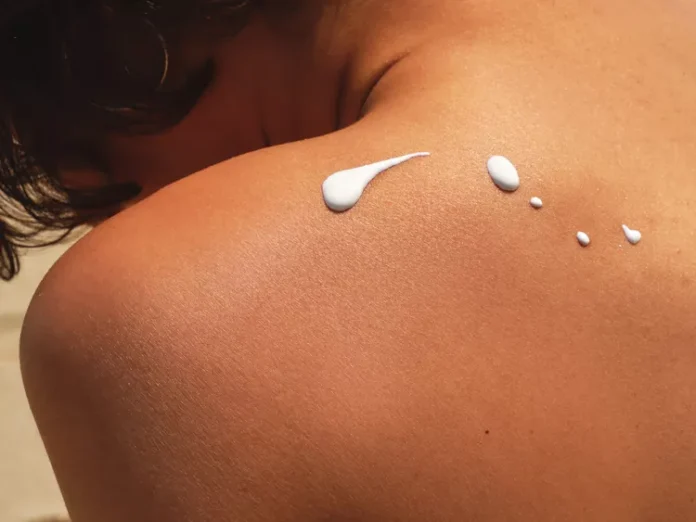Though the last few years have brought us many options that make daily sunscreen application feel like something to look forward to, they’ve also given us reason to question just how safe our sun-protective products really are. One ingredient that’s landed in hot water is avobenzone, a chemical compound commonly found in over-the-counter SPF products. After a 2019 report from the Food and Drug Administration (FDA) raised concerns about whether the ingredient could potentially be an endocrine disruptor, many were left re-evaluating the popular UVA protector.1 But as more information has emerged, it’s become even less clear whether or not avobenzone is safe.
In other words, it’s complicated. Keep reading for what the experts—board-certified dermatologist Anna Karp, MD, and cosmetic chemist Lily Guavera—and the research have to say.
MEET THE EXPERT
- Anna Karp, MD is a a board-certified dermatologist based in New York.
- Lily Guavera is a cosmetic chemist and senior product development manager at SOS Beauty.
What Is Avobenzone?
Avobenzone works by absorbing UV rays—particularly the UVA variety—to protect against the harmful effects of the sun. Avobenzone creates a defensive layer that soaks up the energy from whatever UV radiation you may be exposed to, then expels it before it can do any damage. “It absorbs UVA radiation and converts it into heat, which is then released from the skin,” Karp explains. This differs from mineral sunscreens, like zinc oxide and titanium oxide, which sit on top of the skin and physically deflect UV rays.
Avobenzone is the only FDA-approved UV filter that protects against a broad spectrum of UVA, which is why it’s become such a mainstay in SPF formulations. “UVA penetrates the skin more deeply [than its UVB counterparts], and is associated with premature aging,” says Karp. (Pro tip? You can remember this by knowing that the sun’s “A” rays are associated with aging, while its “B” rays are linked to burning and skin cancer.)
How Is Avobenzone Used in Sunscreen?
Unlike mineral ingredients, which tend to leave a white cast on the skin, avobenzone goes on clear. This, plus its UVA-defending qualities, makes it highly appealing in sunscreen formulations.
Since avobenzone primarily works on UVA rays, Guavera recommends looking for products that pair it with another UVB protective ingredient, like octinoxate or zinc oxide. “It is also very photo-unstable and needs to be stabilized with antioxidants such as vitamin C, E, and ubiquinone,” she says. Not only will these actives help protect against the formation of the reactive oxygen species that cause products to degrade (and make them less potent), but studies have shown that pairing your sunscreen with an antioxidant can boost its protective powers.
The Controversy Around Avobenzone
Avobenzone got the FDA stamp of approval in 1988 but has recently become the subject of some controversy. Concerns first sparked in 2019, when the FDA released a report stating that “a growing body of data has suggested that the transdermal absorption of some sunscreen active ingredients is greater than previously thought.”1 This means that certain actives—namely avobenzone and oxybenzone—enter the bloodstream at higher rates than anyone realized, which raised some alarm bells among consumers. “The fear comes from avobenzone entering the bloodstream and interfering with hormonal functions,” says Guavera.
So Is Avobenzone Safe?
While the concerns around the ingredient being a potential endocrine disruptor are valid, at the moment, they’re just concerns—more research is needed to confirm if avobenzone truly causes any harm. And if you’re still worried: A more recent study from The American Academy of Dermatology notes that “just because an ingredient is absorbed into the bloodstream does not mean that it is harmful or unsafe.” It goes on to say that based on what we know now, the risks associated with not wearing sunscreen (ahem, skin cancer) are far greater than those related to applying a product that contains avobenzone.2
“I think it’s a safe ingredient,” says Karp. Guavera agrees but with one major caveat: “The fears of avobenzone are legitimate when it pertains to pregnant people,” she says. “Because UV radiation testing on pregnant people is not allowed, we cannot scientifically test the hormonal effects of avobenzone on them, so it’s best [they] use mineral sunscreens that have no evidence of being absorbed into the bloodstream.” Mineral sunscreens are also the preferred formulation for children (especially before puberty) to avoid any potential effects on their hormones.
In addition to the potential (but, for now, likely unwarranted) health concerns, avobenzone has also gotten some flack for its effects on the environment. “There is evidence of toxicity and potential bioaccumulation in aquatic environments,” says Guavera. In recent years, a growing body of research has suggested that certain ingredients—including avobenzone—may harm coral reefs.3 Karp notes that “these studies were only done in labs and do not represent real life,” but that hasn’t stopped Hawaii from banning sunscreens that contain avobenzone (along with oxybenzone and octinoxate) from sale in the state.4
In both cases, there isn’t enough clear-cut information to confirm whether or not avobenzone is “good” or “bad.” Ultimately, it’s up to you to choose a sunscreen you’re comfortable—and committed to—applying every day.


